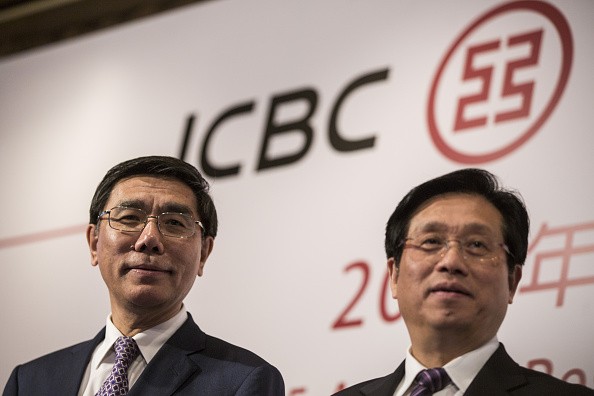After about half a decade of struggling with bad loans, China's biggest banks have shown signs that their risk-control measures for bad loans are efficient, which allowed them to earn higher-than-expected profits, according to the earnings report filed by the three banks.
The banks also posted improved earnings, based on the filings of Industrial & Commercial Bank of China Ltd., China Construction Bank Corp. and Agricultural Bank of China Ltd made this week.
Bloomberg reported that ICBC's bad-loan ratios went down or stabilized, which indicated that the banks benefited from China's economic rebound last year.
The development is seen as a big change for the banking industry that has been struggling with loan defaults, narrower margins as well as tighter regulations on mortgage lending and off-balance sheet wealth-management products.
At a press conference in Beijing on Thursday, March 30, ICBC chairman Yi Huiman said: "We have started to see signs of stabilization and slight improvement in ICBC's asset quality. I believe our asset quality will be better in 2017 than 2016. As the Chinese economy recovers, the external operating environment for banks is also improving."
Last year, ICBC and its two rivals reported combined loan-loss provisions of 262.2 billion yuan ($38 billion), little changed from the previous year, exchange filings show. This was in contrast to the 43 percent increase in charges in 2015 from 2014, at the time when China's economic growth slowed.
According to its exchange filings on Wednesday, March 29, Construction Bank has (non-performing loan) NPL ratio of 1.52 percent by the end of 2016, down from 1.56 percent in September and 1.63 percent in June.
Meanwhile, Agbank's NPL level dropped from 2.39 percent three months earlier to 2.37 percent by December, while ICBC maintained its level at 1.62 percent.
Cost reduction and lower charges
According to the report, the three lenders' full-year earnings were attributed to the cost reduction efforts and lower charges for bad loans. A Bloomberg survey showed that their combined provisions were more than 20 billion yuan, lower than what analysts expected.
Bank of China Ltd., the country's fourth-largest bank, reported on Friday, March 31, that it has increased its full-year provisions by 50 percent. As a result, its NPL ratio dropped to 1.46 percent by December from September's 1.48 percent. Bloomberg data show that among the country's four banks, Bank of China Ltd, has the lowest NPL ratio since the second quarter of 2015.
"Our nonperforming loan coverage ratio rose more than 9 percentage points as we are operating our business in a prudent manner and controlling risks effectively," Bank of China President Chen Siqing said at a media briefing in Beijing. "That's why our provisions grew relatively high, bucking the trend seen from our peers."
Bloomberg data showed that all five of China's largest banks, which have released their 2016 annual profit results, have a total net income of 925.4 billion yuan for 2016, 0.2 percent higher than the previous year.
The report said that China's economy grew 6.8 percent in the fourth quarter, driven by strong consumption and manufacturing recovery. However, economic growth is expected to weaken to 6.5 percent this year and 6.2 percent in 2018.
Although the bad loans may have stabilized, credit will continue to rise as the government will inject stimulus to drive expansion further. This year, the government is set to add credit that is almost equivalent to Germany's GDP, which will further add to the massive amount poured into social financing.



























